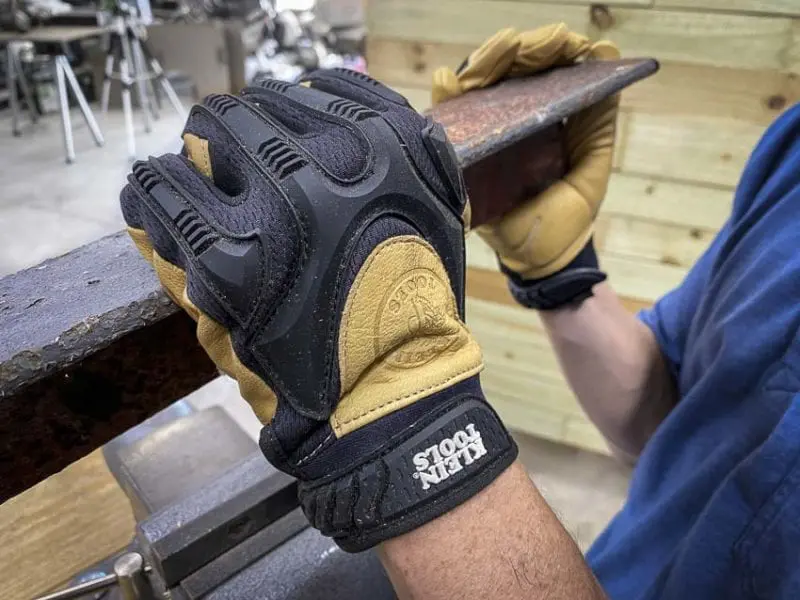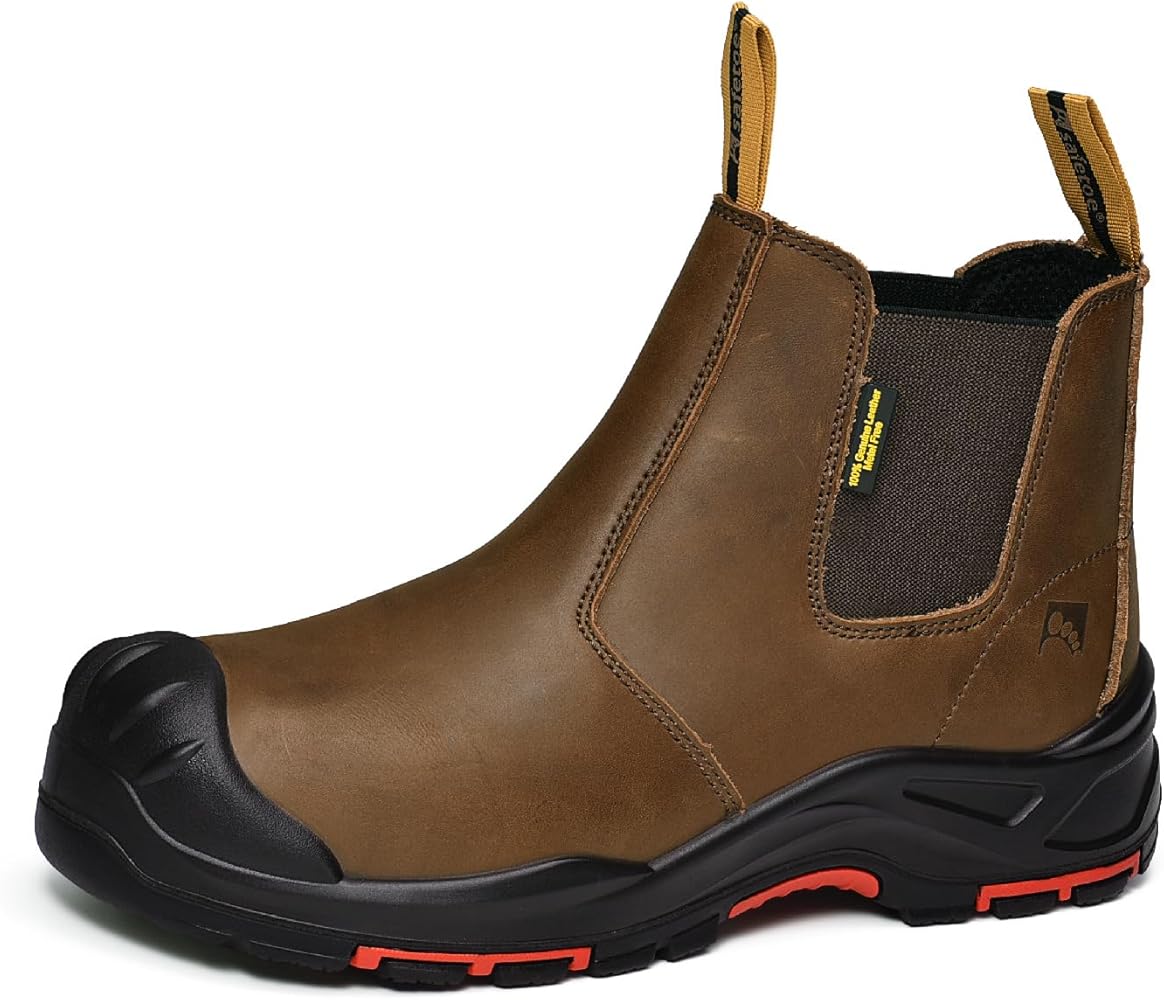
Handwear crafted from animal hide provides robust protection and durability for various manual tasks. These protective coverings, designed specifically for male hands, are essential for industries such as construction, manufacturing, and agriculture. They shield hands from abrasions, cuts, punctures, and impacts, ensuring safety and enhancing performance.
Durable hand protection plays a vital role in preventing workplace injuries and increasing productivity. The natural resilience of animal skin offers excellent grip and dexterity, allowing for precise handling of tools and materials. Historically, such protective garments have been crucial for countless trades, evolving from basic hand coverings to specialized designs catering to specific occupational needs. This enduring significance highlights their practical value and contribution to worker safety throughout history.
The subsequent sections will delve into various aspects of protective handwear including material selection, construction techniques, sizing and fitting, proper care and maintenance, and recommended applications for different work environments.
1. Durability
Durability represents a critical factor in the efficacy of protective handwear designed for demanding tasks. Extended lifespan reduces replacement frequency, contributing to cost-effectiveness and uninterrupted workflow. This section explores key facets contributing to the durability of such protective equipment.
-
Material Selection
The inherent properties of the chosen material significantly influence longevity. Full-grain leather, known for its dense fiber structure, exhibits superior abrasion and tear resistance compared to split-grain leather. Synthetic materials, such as Kevlar or nylon, offer enhanced protection against specific hazards like cuts or chemicals. The selection process must align material properties with anticipated workplace challenges.
-
Construction Techniques
Manufacturing methods play a crucial role in overall glove durability. Double stitching, reinforced seams, and strategically placed patches enhance resistance to wear and tear in high-stress areas. Gunn cut patterns, known for their single-piece palm construction, minimize seam failure, contributing to extended glove lifespan. Understanding construction techniques allows for informed assessments of product resilience.
-
Treatment and Conditioning
Regular application of leather conditioners and waterproofing agents safeguards against cracking, drying, and premature deterioration. Proper care and maintenance practices, such as cleaning and drying after each use, significantly extend glove lifespan. Appropriate storage, away from direct sunlight and extreme temperatures, further preserves material integrity.
-
Thickness and Reinforcement
The thickness of the leather and the presence of reinforcements contribute to the glove’s ability to withstand demanding tasks. Thicker leather provides greater protection against abrasion and puncture, while reinforcements in high-wear areas like the palm and fingertips further enhance durability. Selecting appropriate thickness and reinforcement levels depends on the specific hazards encountered in the work environment.
Prioritizing durability in the selection process ensures prolonged hand protection, reducing replacement costs and promoting worker safety. By considering material properties, construction techniques, and appropriate care practices, individuals can maximize the lifespan of their protective handwear, optimizing their investment and ensuring consistent protection in demanding work environments.
2. Protection
Effective hand protection constitutes a critical element in workplace safety, mitigating risks associated with various hazards. Specialized handwear designed for male hands provides a crucial barrier against potential injuries, ensuring worker well-being and productivity. This section examines the multifaceted nature of protection offered by such specialized equipment.
-
Impact Resistance
Protection against impacts from tools, machinery, or falling objects is paramount in numerous work environments. Reinforced padding, strategically placed across knuckles and fingers, absorbs and dissipates impact forces, minimizing the risk of fractures, bruises, or other hand injuries. Construction workers, mechanics, and warehouse personnel frequently benefit from this type of specialized hand protection.
-
Abrasion Resistance
Repeated contact with rough surfaces or abrasive materials can cause skin irritation, blisters, and abrasions. Durable leather, particularly full-grain varieties, offers exceptional resistance to abrasion, protecting hands during tasks involving handling concrete, bricks, or lumber. This protective quality is crucial for maintaining hand health and preventing discomfort in demanding work environments.
-
Puncture Resistance
Working with sharp objects, such as nails, wires, or splinters, presents a significant risk of puncture wounds. Gloves incorporating puncture-resistant materials, like Kevlar or steel mesh, provide a crucial barrier against these hazards. Electricians, carpenters, and recycling workers often require this specialized protection to minimize the risk of hand injuries.
-
Chemical Resistance
Exposure to chemicals, solvents, or oils can cause skin irritation, burns, or allergic reactions. Gloves constructed from chemically resistant materials, such as nitrile or neoprene, offer essential protection against these hazards. Laboratory technicians, painters, and automotive workers often rely on chemical-resistant gloves to maintain hand health and safety.
Understanding the various protective features offered by specialized handwear allows for informed selection based on specific job requirements and potential hazards. By prioritizing appropriate hand protection, industries can contribute significantly to a safer and more productive work environment, minimizing the risk of hand injuries and promoting overall worker well-being.
3. Fit
Proper fit in hand protection is paramount for both safety and performance. Ill-fitting gloves compromise dexterity, reduce grip strength, and increase the risk of accidents. This section explores the crucial aspects of fit concerning handwear designed for men.
-
Sizing
Accurate sizing ensures a snug yet comfortable fit. Manufacturers typically provide sizing charts based on hand circumference and length. Proper measurement and adherence to these charts are crucial for selecting appropriately sized gloves. Inconsistent sizing can lead to discomfort, reduced dexterity, and decreased overall hand protection.
-
Snugness
Gloves should fit snugly without constricting hand movements. Excessive tightness restricts blood flow and reduces dexterity, while loose-fitting gloves compromise grip and increase the risk of snagging. The ideal fit allows for a full range of motion while maintaining a secure grip on tools and materials.
-
Finger Length
Adequate finger length is essential for optimal dexterity and tactile sensitivity. Gloves with excessively long fingers hinder precise movements and reduce tactile feedback, while short fingers compromise protection by leaving fingertips exposed. Correct finger length ensures that fingertips align with the glove ends, allowing for maximum control and protection.
-
Closure Mechanisms
Secure closure mechanisms, such as elastic cuffs, Velcro straps, or drawstrings, prevent gloves from slipping off during use. These closures also contribute to a customized fit, accommodating variations in wrist size and preventing debris from entering the glove. A secure and adjustable closure system enhances both safety and comfort.
A well-fitting glove maximizes both protection and performance. By understanding the key elements of sizing, snugness, finger length, and closure mechanisms, individuals can select handwear that optimizes safety, comfort, and dexterity in demanding work environments. Proper fit ensures that hand protection remains effective, contributing to injury prevention and increased productivity.
4. Dexterity
Dexterity, the ability to perform intricate tasks with precision and control, represents a critical factor in the effectiveness of hand protection. Maintaining optimal dexterity while wearing work gloves directly impacts productivity and safety. The relationship between dexterity and handwear designed for men requires careful consideration of material selection, construction techniques, and fit.
Thick, inflexible materials hinder fine motor control, reducing efficiency and increasing the risk of errors. Conversely, thin, supple leather allows for greater tactile sensitivity and finger mobility, facilitating precise handling of tools and materials. Construction techniques, such as strategically placed seams and articulated finger designs, further enhance dexterity by allowing for natural hand movements. A proper fit ensures that gloves conform snugly to the hand without restricting flexibility, maximizing both comfort and control. For example, a mechanic working on a complex engine repair requires gloves that allow for precise manipulation of small parts, while a construction worker handling heavy materials benefits from gloves that provide a secure grip without compromising dexterity. The practical significance of this understanding lies in the ability to select handwear that optimizes the balance between protection and dexterity, ensuring both safety and productivity in demanding work environments.
Understanding the interplay between dexterity and protective handwear enables informed decision-making based on specific job requirements. Selecting gloves that prioritize both protection and dexterity enhances worker performance and minimizes the risk of accidents arising from compromised hand control. Further research exploring the impact of different glove designs and materials on dexterity can contribute to the development of even more effective hand protection solutions.
5. Material
Material selection significantly influences the performance, durability, and protection offered by handwear designed for demanding tasks. Choosing the appropriate material requires careful consideration of the intended application and potential hazards encountered in the work environment. The following facets explore the critical role of material selection in ensuring effective hand protection.
-
Leather Types
Various leather types offer distinct characteristics relevant to specific work environments. Full-grain leather, derived from the outermost layer of the hide, provides exceptional durability, abrasion resistance, and breathability. Split-grain leather, a more cost-effective option, offers decent abrasion resistance but less durability compared to full-grain. Goat-skin leather, known for its suppleness and dexterity, is often preferred for tasks requiring fine motor control. Selecting the appropriate leather type depends on the balance between required protection, dexterity, and budget.
-
Synthetic Materials
Synthetic materials, such as nylon, Kevlar, and polyethylene, offer specialized protection against specific hazards. Nylon provides excellent abrasion resistance and flexibility, while Kevlar offers exceptional cut resistance, often utilized in applications involving sharp objects. Polyethylene fibers provide impact protection and chemical resistance, making them suitable for handling hazardous materials. The choice of synthetic material depends on the specific risks encountered in the work environment.
-
Material Treatments
Treatments applied to glove materials enhance their protective properties and extend their lifespan. Waterproofing treatments protect against moisture, crucial for outdoor work or tasks involving liquids. Flame-resistant treatments enhance safety in environments with potential fire hazards. Chemical treatments provide resistance to specific substances, safeguarding hands against chemical burns or irritation. Understanding the available material treatments allows for informed selection based on anticipated workplace hazards.
-
Lining Materials
Lining materials contribute to comfort, insulation, and moisture management. Cotton linings provide breathability and absorb sweat, enhancing comfort in warm conditions. Wool linings offer excellent insulation in cold environments, protecting hands from frostbite. Synthetic linings, such as fleece or Thinsulate, provide warmth and moisture-wicking properties, maintaining hand comfort in various temperatures. Selecting the appropriate lining material enhances overall glove performance and worker comfort.
The selection of appropriate materials directly impacts the effectiveness of hand protection. By carefully considering the properties of various leather types, synthetic materials, material treatments, and lining materials, individuals can choose handwear optimized for specific job requirements and potential hazards. Understanding the nuanced relationship between material selection and hand protection contributes to a safer and more productive work environment.
Frequently Asked Questions
This section addresses common inquiries regarding handwear designed for demanding tasks, providing concise and informative responses to facilitate informed decision-making.
Question 1: How does one determine the correct size for work gloves?
Sizing charts provided by manufacturers typically guide selection based on hand circumference and length measurements. Consulting these charts and accurately measuring one’s hand ensures a proper fit.
Question 2: What distinguishes full-grain leather from split-grain leather?
Full-grain leather, sourced from the outermost layer of the hide, offers superior durability and abrasion resistance. Split-grain leather, derived from lower layers, provides a more cost-effective option with moderate durability.
Question 3: How should leather work gloves be maintained to ensure longevity?
Regular application of leather conditioner and appropriate storage practices, away from direct sunlight and extreme temperatures, contribute to prolonged glove lifespan. Cleaning and drying gloves after each use further enhances their longevity.
Question 4: What type of glove material offers the best protection against cuts and punctures?
Materials such as Kevlar and steel mesh provide excellent cut and puncture resistance. Selection depends on the specific hazards encountered in the work environment.
Question 5: Are there specific glove designs optimized for different types of work?
Glove designs vary based on intended application. Mechanics’ gloves often prioritize dexterity, while welding gloves emphasize heat resistance. Construction gloves typically focus on impact protection and abrasion resistance.
Question 6: How frequently should work gloves be replaced?
Replacement frequency depends on usage intensity and wear and tear. Regular inspection for signs of damage, such as holes, tears, or excessive wear, guides replacement decisions. Prioritizing safety necessitates timely replacement to maintain optimal hand protection.
Proper glove selection, maintenance, and timely replacement contribute significantly to workplace safety and productivity. Understanding these aspects ensures effective hand protection and minimizes the risk of work-related hand injuries.
The following section will offer concluding remarks regarding the importance of appropriate hand protection in various occupational settings.
Tips for Selecting and Using Protective Handwear
Selecting and utilizing appropriate hand protection is crucial for ensuring safety and maximizing performance in various work environments. The following tips offer guidance for optimizing hand protection strategies.
Tip 1: Assess Workplace Hazards: Thoroughly evaluate potential hazards present in the work environment, such as sharp objects, chemicals, extreme temperatures, or impact risks. This assessment informs appropriate glove selection.
Tip 2: Prioritize Material Selection: Choose glove materials based on specific hazard protection needs. Consider factors such as cut resistance, abrasion resistance, chemical resistance, and thermal insulation.
Tip 3: Ensure Proper Fit: Ill-fitting gloves compromise both safety and dexterity. Consult manufacturer sizing charts and ensure a snug yet comfortable fit that allows for a full range of motion.
Tip 4: Inspect Gloves Regularly: Regularly inspect gloves for signs of wear and tear, such as cuts, abrasions, or punctures. Timely replacement of damaged gloves maintains optimal protection.
Tip 5: Maintain Gloves Properly: Adhere to manufacturer recommendations for cleaning and conditioning leather work gloves. Proper maintenance extends glove lifespan and preserves their protective qualities.
Tip 6: Consider Dexterity Requirements: Balance protection needs with dexterity requirements. Tasks requiring fine motor control necessitate gloves that allow for precise hand movements and tactile sensitivity.
Tip 7: Understand Industry Standards: Familiarize oneself with relevant industry standards and regulations regarding hand protection. Compliance with these standards ensures appropriate safety measures are in place.
Implementing these strategies significantly contributes to a safer and more productive work environment. Prioritizing appropriate hand protection safeguards against potential injuries and enhances worker performance.
The subsequent section will provide concluding remarks on the essential role of hand protection in promoting occupational safety and well-being.
Conclusion
Appropriate hand protection remains paramount for safeguarding workers in diverse occupational settings. Material selection, construction quality, and proper fit directly influence the effectiveness of leather work gloves designed for men. Prioritizing these factors ensures optimal protection against workplace hazards, contributing to injury prevention and enhanced productivity. Understanding the nuanced relationship between hand protection and specific job requirements empowers informed decision-making, fostering a safer and more efficient work environment.
Continued advancements in material science and glove design promise further enhancements in hand protection technology. Investing in robust hand protection represents an investment in worker well-being and overall operational effectiveness. The ongoing emphasis on workplace safety underscores the enduring significance of appropriate handwear in mitigating risks and fostering a culture of prevention.



